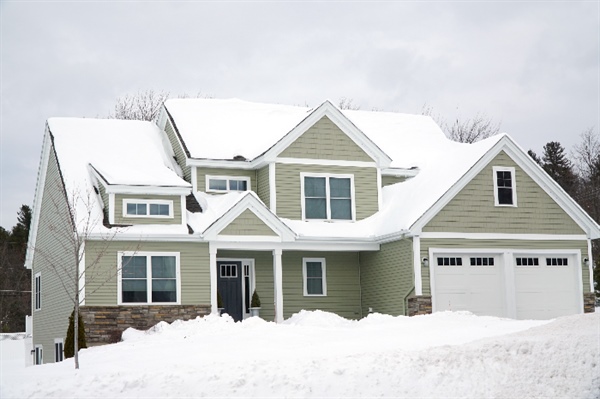Signs of Winter Roof Damage in Minneapolis Homes: Essential Tips

Winter can be tough on roofs, especially in Minneapolis, where cold temperatures, heavy snow, and ice buildup are common. That's why understanding the signs of winter roof damage is essential for homeowners to prevent long-term issues and costly repairs.
Allied Construction provides insights into what to look for during and after winter storms to protect your home from severe damage. In this article, we will explore the five main signs of winter roof damage that Minneapolis homeowners should be aware of, including common issues caused by heavy snow, ice buildup, and wind.
With this knowledge, you can identify potential problems early and ensure that your roof stays in top condition throughout the winter months!
What Are the Most Common Winter Roof Damages?
Winter conditions can cause several types of damage to a roof. Common issues include ice dams, where melting snow refreezes at the roof’s edge, causing water to back up under shingles. If left unchecked, this can lead to water leaks and even structural damage. Heavy snow can also add significant weight, which might cause strain or cracks in the roofing structure.
Roof shingles also tend to suffer during winter as freezing and thawing cycles can cause them to crack or break. This allows water to penetrate the roof, leading to leaks and potential damage to the insulation and interior of the home. To avoid such issues, it’s important to regularly inspect your roof and address any signs of wear and tear.
Frost can also build up under shingles, weakening the material over time and compromising the integrity of the roof. Keeping your roof free of debris and ensuring proper attic insulation can help reduce these risks.
How Can Heavy Snow Lead to Roof Leaks?
Heavy snow buildup on your roof can be a significant cause of leaks. When large amounts of snow accumulate, the added weight can weaken the roof's structure, especially if the roof is old or has existing vulnerabilities. As temperatures fluctuate, the snow can melt and refreeze, leading to ice dams that trap water and force it underneath shingles.
Once water gets under the shingles, it can seep into the underlayment and eventually into your home. The risk is particularly high during rapid warming after a snowstorm, as the melting snow may not drain properly. Regular snow removal and checking for ice dams can help reduce the chances of leaks and extensive damage.
Contacting a Wayzata roofing contractor for professional assistance can ensure that any snow-related damage is managed effectively, keeping your roof safe and secure.
How to Identify Roof Damage from Ice Buildup?
Ice buildup, especially in the form of ice dams, is one of the most damaging winter hazards for roofs. Look for large icicles along the roof’s edge or any signs of water pooling on the roof. These are strong indicators of ice dams. Over time, ice dams can cause shingles to loosen or crack, allowing water to infiltrate the roof deck.
You should also check the attic for signs of water stains, as this can indicate that ice has pushed water under the shingles. If left unaddressed, ice buildup can lead to extensive damage not only to the roof but also to the interior of your home.
What Should You Do if You Spot Shingles Damaged by Winter Weather?
If you notice damaged shingles, such as cracks, curling, or missing pieces, it’s essential to address these issues immediately. Damaged shingles can expose the underlying roof to moisture and wind, making it vulnerable to leaks and structural damage.
Temporarily covering the area with a tarp can prevent further damage until a permanent fix is possible. Inspecting shingles periodically throughout the winter can help catch issues early, preventing more extensive damage.
How to Assess Your Roof for Wind Damage After a Winter Storm?
Strong winter winds can cause a variety of issues for your roof, from loosening shingles to damaging flashing. After a storm, check your roof for any loose or missing shingles and inspect chimneys and vents for damage. Bent or loose flashing can lead to leaks, especially when combined with heavy snow or ice.
Also, be sure to examine your attic for any signs of daylight coming through the roof or water stains, which can indicate wind damage. Regularly assessing your roof after storms helps identify potential problems before they become major issues.
For more detailed information on protecting your roof from winter weather, you can always Schedule a Free Home Inspection with Allied Construction and learn more about all of our services. Call us today at 952-737-8496 or reach out to us online.